






In my letter to you last year, I reflected on our first 30 years of progress together. It’s remarkable how much soybean production has changed in three decades.
But perhaps even more extraordinary is how much it’s changed in just the last few years. It’s safe to say that the pace of change has never been so fast, and change will never be this slow again.
So what will our industry look like in another 10 years? How about five years? How about next year? Challenging questions to answer, but essential ones, especially as farms transition into next-generation practices, products and people.
That’s why the Ohio Soybean Council is here. Your checkoff contribution allows us to progressively maximize the value of soybeans, increase farm profits with smarter, safer production methods and secure the long-term future of the soybean industry.
We’re invested in the future of your farm, and the next generation that will manage it. In the following pages, you’ll learn about how your checkoff funds are enhancing our state’s soybean production through quantifiable research, collaborative outreach and accessible education.
I’m proud of our efforts to help Ohio soybean farmers be more successful in today’s competitive ag industry. And I’m confident that in another five, 10 and 30 years, the mutual commitment we’ve made in the future of our state’s soybean industry will result in long-term success for generations to come.
Thank you for your support of the Ohio Soybean Council and the soybean checkoff.

Sincerely,
Jeff Magyar Chairman, Ashtabula County
Your investment is working in many ways to increase profitability for all Ohio soybean farmers. Checkoff dollars are funding plant research to improve soybean yields and minimize the harmful effects of pests in your fields, and funding the discovery of exciting new soy-based products and technologies that can diversify the market for soybeans.
OSC is expanding international markets and investing in trade team visits, buyers conferences and other partnerships. Domestically, OSC works to promote and highlight the value of soybeans to the livestock industry and encourage the use of biodiesel, sustainable aviation fuel and other types of clean, renewable energy derived from soy oil.
Other checkoff investments include educating K-12 students about where their food comes from and the importance of agriculture, including the career opportunities the industry has to offer. OSC has also forged a strong partnership with the Ohio Soybean Association as they work to promote effective policies and legislation that affect soybean farmers across the state of Ohio.
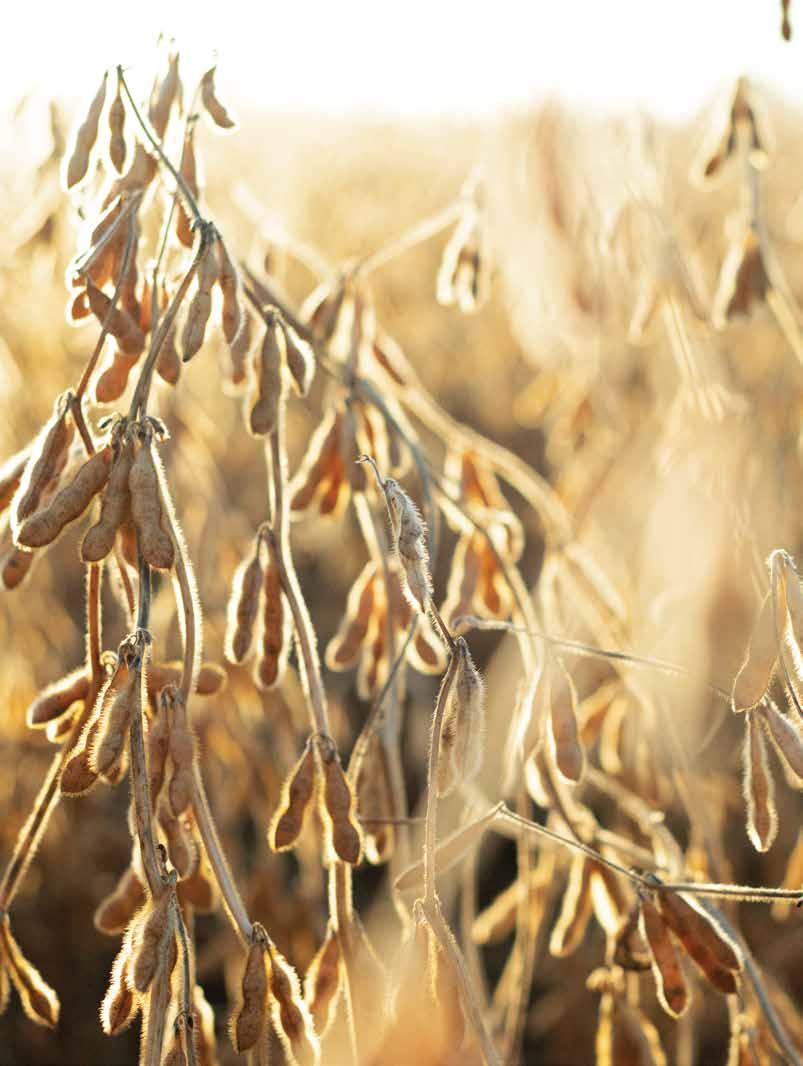

Assessment receipts remitted to other states
I worked for Dr. Laura Lindsey at OSU for 4 years, so I can attest to the research that gets done to help Ohio farmers make informed decisions on how best to grow soybeans. She does product testing for various inputs that can be applied to soybeans. As a farmer, it’s really nice to know what works and what doesn’t so we can make the best decision on input costs to help drive profitability on every acre.
J.D. Bethel Champaign
County


Our collaboration with soybean researchers at The Ohio State University is identifying smarter, safer ways to push production. Your checkoff supported research projects that examined invasive weed management with cover crops, the benefits of biological seed treatments, and benchmarking soil health indicators.
Soybean Cyst Nematode (SCN) is a problem we’re working to address. OSC funding enables farmers to submit two free soil samples to test the potential level of SCN in their fields and supports research to eliminate this pest. Both efforts directly benefit farmers through increased profitability.
The following pages offer a breakdown of how your investment in innovative research is best positioning Ohio soybean farmers for today and tomorrow.
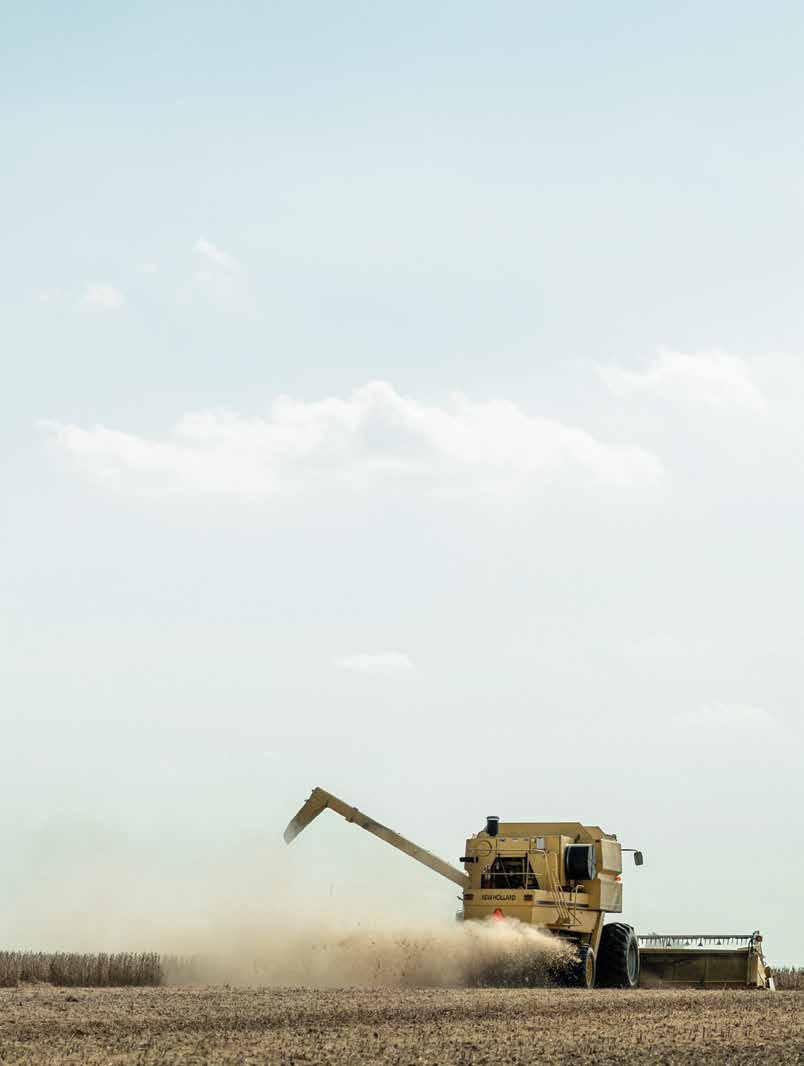
RESEARCHERS
Alyssa Essman
Tony Dobbels
PROJECT
A preharvest survey evaluated soybean fields late in the season to assess waterhemp and other weed populations across the state and collect samples for resistance screening.
TAKEAWAY
Waterhemp is increasingly prevalent across the state, and populations of waterhemp collected for resistance screening varied in their sensitivity to some of the most commonly used herbicides, an indicator of resistance development. Management recommendations related to the control of waterhemp were provided to growers and crop consultants, and results of these studies were used for several extension presentations.
RESEARCHERS
Fabiano Colet
Emma Matcham
Laura Lindsey
PROJECT
Biological seed treatment is a growing market in the U.S., and soybean growers are interested in understanding the benefits of applying biological products to the seed. Often, farmers are bombarded with marketing claims about biological seed treatments. One of the objectives of this study is to evaluate situations where biological seed treatments improve soybean yield.
TAKEAWAY
Results from 41 locations across 13 states will be updated once more data are received. Only four sites — one in South Dakota and three in Wisconsin — had significant positive yield results from biological seed treatments.
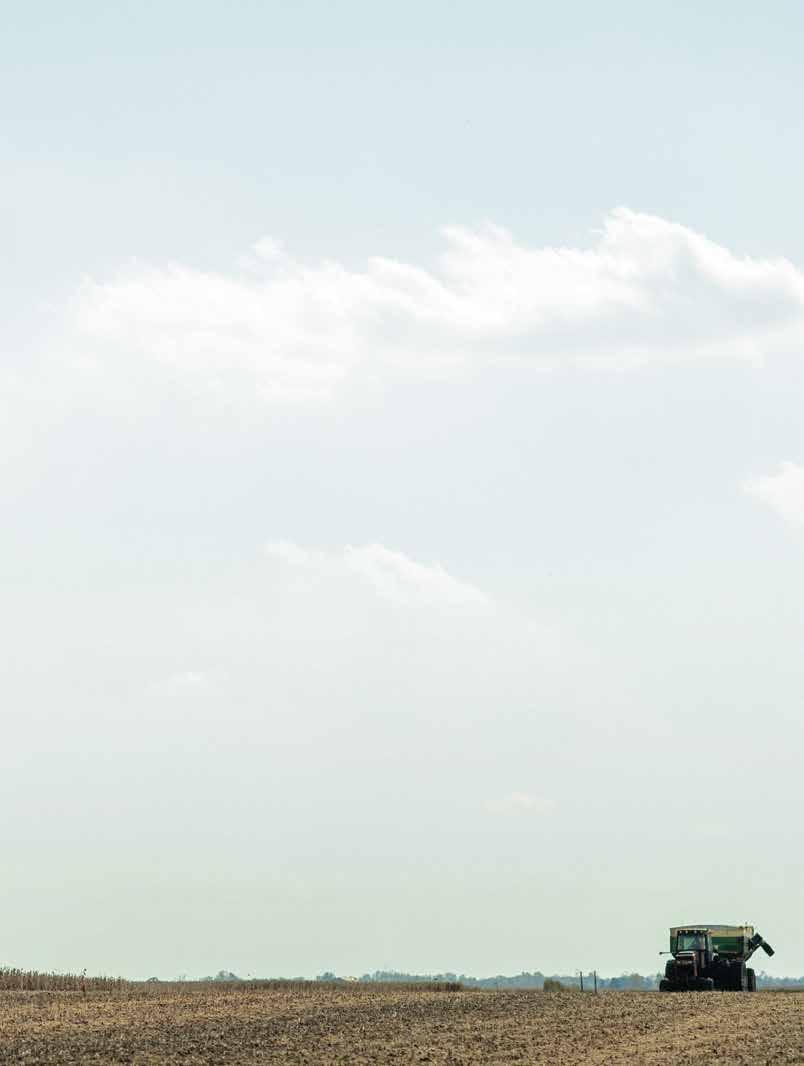
RESEARCHERS
Elizabeth Hawkins
John Fulton
Jason Hartschuh
Leonardo Deiss
Soil health continues to be of critical interest for Ohio soybean farmers. This project aimed to develop an understanding of how field-level management practices influence changes in soil health, benchmark soil health indicators to improve interpretation of tests, and learn how soil health values relate to yield.
Soils were sampled from 168 fields across Ohio. The results demonstrated that conservation practices like cover crops and organic nutrient applications increased soil carbon and this was reflected in the soil health indicators tested. Improved soil health values were correlated with increased crop yields.
Among the findings, farmland and long-term sites under no-till, minimum tillage (chisel till), a soybean-cornwheat rotation, and the use of cover crops resulted in the highest soil health (SH) scores. Lower scores occurred when soils had less than 6% plant residue coverage, and when continuous deep tillage (moldboard plow) was practiced.
The application for farmers is the ability to request the common chemical soil nutrient analysis and additionally request the soil health test, which would provide the farmer with an SH score. An additional analysis on cost/benefits of switching to soil and crop management systems would enable them to reach the desired SH score.
RESEARCHER
Richard Dick
Another outcome of this 3-year OSC-funded research program is a multi-linear soybean yield prediction model. The model is built from a robust data set developed by periodically sampling 39 fields in Ohio, and has a high degree of predicting soybean yield outcomes. Although further refinement of the model is in progress, it is showing great promise for SH scores to predict soybean yield.
You know innovation is a critical component of success. That’s why, while you’re in the field, OSC is researching and developing new soy-based products, along with traits and technologies that perpetually increase the value of your soybeans.
Located on the campus of Ohio Wesleyan University in Delaware, Ohio, Airable Research Lab has leveraged checkoff funds from Ohio farmers to develop problemsolving, exclusively soy-based products since 2019.
Soybean oil is the major focus of the lab’s work as it is a natural replacement for petroleum oil, and the lab often improves products and helps companies scale up production of these soy-based products. As the demand for sustainable, soybean-based products grows, your checkoff helped bring to market several new Airable products and create new corporate partnership opportunities with Stanley Black & Decker.
Airable also continues to add state-level partners, including Kentucky and Missouri in 2023, and OSC matches the support received from state partnerships to maximize resources available for research and new product commercialization.
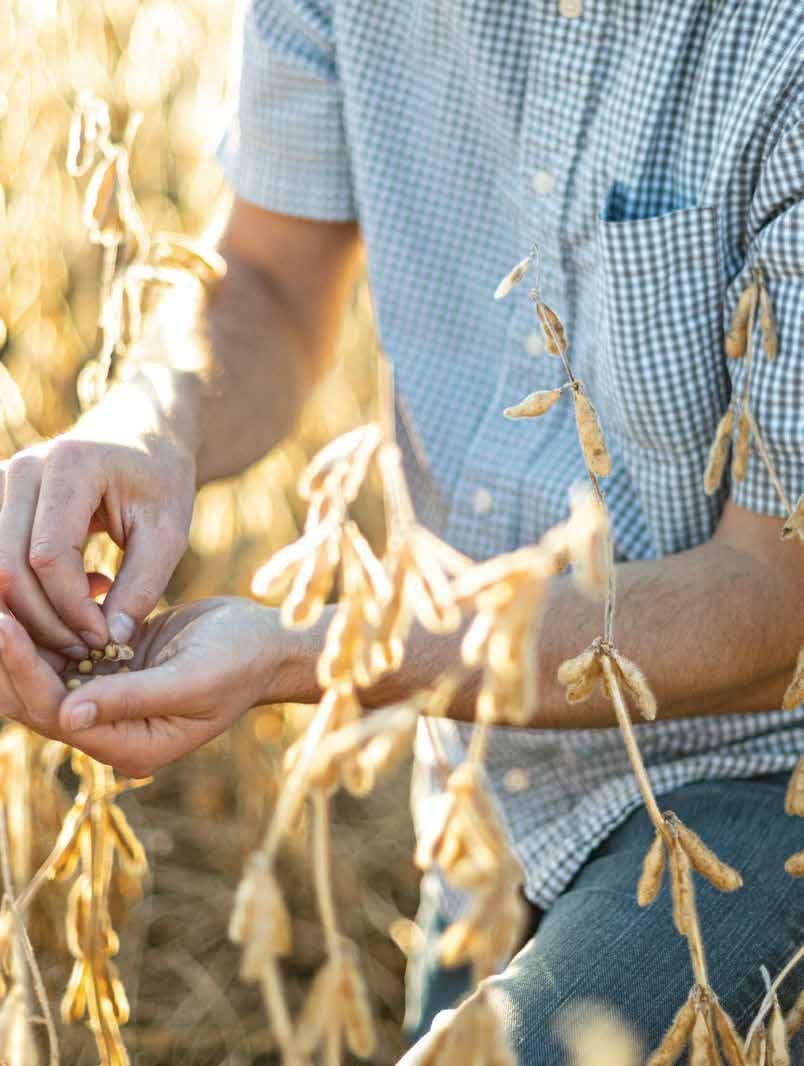


A powerful roofing shingle rejuvenator, Roof Maxx’s primary component is soybean oil methyl esters that are obtained through the transesterification of soybean oil. This chemistry provides an excellent biodegradable, nontoxic substitute for petroleum-based solvents.
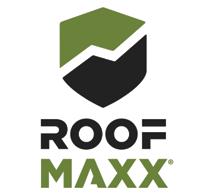
Roof Maxx extends the life of roofing materials by restoring their flexibility and pliability, and enhancing the adhesion of the protective roofing granules. These granules reflect the sun’s ultraviolet light, which is the main source of chemical/physical degradation.
Roof Maxx can extend the life of an asphalt shingle roof by up to five years with a single treatment, and up to 15 years with multiple treatments. Airable researchers recently improved Roof Maxx, which originated in Columbus in 2017. The second-generation product will clean algae, dirt and mold to beautify and protect roofs, and is distributed in all 50 states.

This soy-based rust remover quickly and effectively removes rust from iron and steel without damaging the underlying metal surface. This versatile product is suitable for use on a range of materials and household and industrial applications including auto parts, machinery, tools and more. The primary active ingredient is modified soybean derivatives, and the modifications impart water solubility and chelating ability to the compound. The chelating agents bind with metal ions present in rust, destabilizing their structures and helping dissolve and dislodge rust particles from the surface.
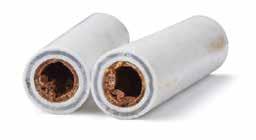
In partnership with LFS Chemistry, Airable developed a non-phosphorus alternative to its soy-based scale inhibiting additive. Because water picks up insoluble minerals as it
passes through the ground, the water treatment industry requires scale inhibitors to prevent calcium scale buildup in water systems.
If unaddressed, scale deposits grow and harden over time and can damage equipment. Phosphorus-based scale inhibitors have historically been used, but phosphorus in waterways leads to eutrophication, which threatens water quality. This renewable phosphorusfree solution protects and preserves water resources.

Airable developed a soy-based oil designed to protect, clean and lubricate moving metal parts such as gears and hinges. The oil also penetrates and frees bolts, valves and other components that have become stuck, and protects against further rust and corrosion.
This multi-use oil also displaces moisture to restore power tools, engines and other water-flooded equipment. The formula features a soy-derived oil that provides base lubrication while additives improve corrosion prevention, lubrication and metal wetting ability.
More than ever before, the profitability of your farming operation requires strong soybean markets. While you work to grow crops, your OSC checkoff works to increase demand for your soybeans both domestically and abroad.
Ohio exports 60 percent of all its soybeans, which is more than any other crop. Our state’s climate and high-quality soil traditionally produces excellent food-grade beans. OSC collaborates with the U.S. Soybean Export Council (USSEC) to promote our high-quality non-GMO soybeans in global food markets, and particularly in Southeast Asia.
With direct relationships with buyers and in-country programs, USSEC is a global ally that connects Ohio soybean farmers to international markets and creates new opportunities to develop business relationships.
For every 1% increase in U.S. poultry and egg product exports, 1.5 million more bushels of soybeans will be used in the U.S.
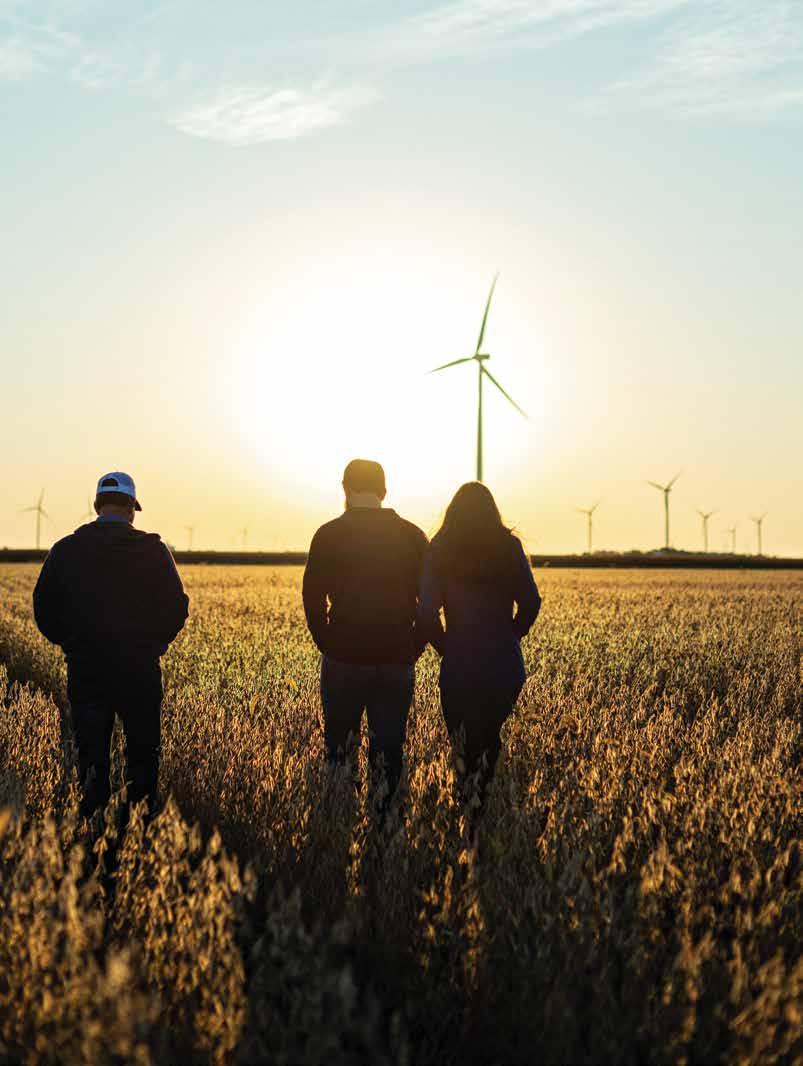

A project with USSEC, Soy Excellence Centers were established in important emerging soy markets — Egypt, Nigeria, Honduras and Southeast Asia. We continue to build a presence in these regions so that U.S. Soy remains top of mind as they move to become mature markets.
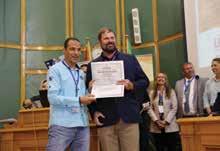
Soy Excellence Centers provide training programs in poultry production, aquaculture management, feed mill processing and refining, and swine production.
This workforce training helps attendees increase productivity and profitability, while developing a global network of tomorrow’s soy leaders. More than 8,000 early-to-mid-career protein professionals have completed these programs globally.
OSC hosted major buyers of food-grade beans for soy milk and tofu, as well as more than 20 soy food professionals from the Korea Soy Food Team and Soy Food Masters Team (part of a program sponsored by OSC).
Buyers are especially interested in Ohio’s non-GMO soybean production. Buyers visited Metzger Family Farms in
Pickaway County, viewed crop progress and questioned Scott Metzger, an OSC board member, about market futures and prices, and learned about the checkoff.
During these visits, farmers learned more about what buyers look for, so they can meet their needs and ensure they continue to prefer U.S. Soy. This was an excellent opportunity to build the connections and relationships that are important for business.

to stay in their region while building relationships and connecting with other regional buyers.
Logan County farmer and OSC Vice Chairman Bill Bayliss represented Ohio and gave presentations at these events, explaining the importance of sustainability to farmers and consumers, and the hard work that goes into growing specialty soybeans. In 2022, South Korea imported 190,000 metric tons of food-grade beans.
More than 700 attendees from 58 countries were in New York City in August for SoyConnext, a global soy summit hosted by USSEC that brings together International buyers, farmers, exporters and suppliers.
Trade team invitationals at the summit enabled buyers to meet with multiple sellers, receive market updates, and learn about future trends, best buying scenarios and animal feed utilization. OSC invests in this important event to continue to differentiate Ohio soybeans as higher protein and higher quality beans.
Approximately 150 attendees participated in the U.S. Food Bean Buyers Conference in Seoul, South Korea and the Asia Soy Excellence and Food Summit in Thailand. These events help buyers understand the U.S. Soy story. Similar to the SoyConnext Conference, these events allow buyers
Your checkoff dollars help fund the USA Poultry and Egg Export Council (USAPEEC), whose mission is to develop new export markets and maintain access to current markets.

OSC supports USAPEEC by sponsoring trade teams and the annual meeting of the Mexican National Association of Poultry Science, which helps expand and explore new markets, build relationships and create a preference for U.S. chicken, turkey and eggs. OSC also sponsored a turkey meat promotion to encourage turkey consumption in the Caribbean.
Animal agriculture is the number one customer for Ohio soybeans. Helping increase the demand for meat increases demand for soybean meal.
In 2023, OSC partnered with the Ohio Poultry Association, the Ohio Beef Council, the Ohio Pork Council, and with a leading poultry producer, to highlight the benefits of soybeans and the value of soybean farmers to the livestock and poultry industries.
10.5 BILLION
POUNDS OF SOYBEAN OIL USED FOR BIOFUELS IN 2022
EQUALS
983.5 MILLION
BUSHELS WORTH OF SOYBEAN OIL
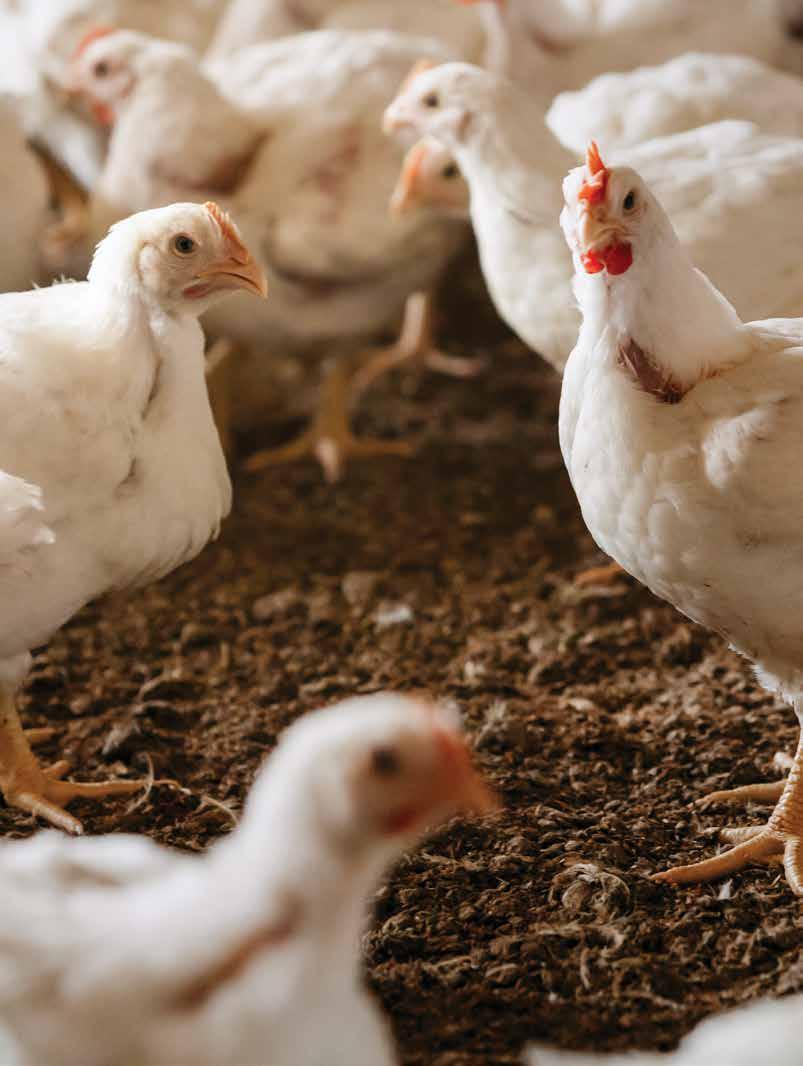


OSC annually invests in the Soy Transportation Coalition (STC) to support national efforts to ensure an efficient and reliable transportation system to move soybeans. STC research determined that shipping costs for soybeans from Mississippi Gulf export terminals would decline $0.13 per bushel, or $5 per metric ton, once the lower Mississippi River is dredged to a depth of 50 feet. The Mississippi River Project supports dredging that deepens the Lower Mississippi River.
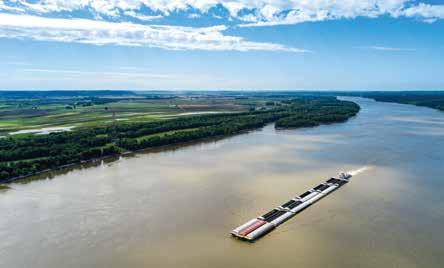
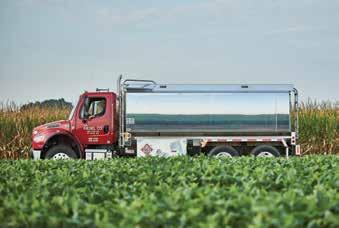
In June 2023, Clean Fuels Ohio featured biodiesel as a “Fuel of the Month,” highlighting biodiesel on their social media and hosting an informational webinar. The webinar included representatives from Ohio Soybean Council, Clean Fuels Alliance America, Benchmark Biodiesel, and a fleet manager from the City of Columbus. OSC was also a sponsor for the Clean Energy Conference in November. This event showcased a biodiesel vehicle and booth staffed by OSC members who spoke with conference attendees about using a renewable liquid fuel.
Your checkoff continued to support this increasingly important and emerging market. OSC partnered with Clean Fuels Alliance America (formerly the National Biodiesel Board) to invest in national efforts to encourage use of liquid fuels including biodiesel, renewable diesel, and sustainable aviation fuel — all of which use soybean oil as a feedstock. Soy-based biofuels account for 13% of the value of your soybean bushel price.
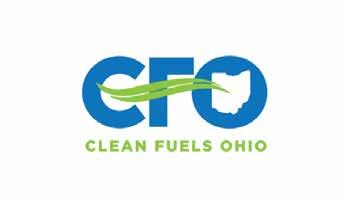
GrowNextGen. Because only 4 percent of students take an Ag Science class in high school, OSC uses checkoff dollars to make the connection between science and agriculture in K-12 classrooms. We provide information to Ohio high school students about career opportunities in agriculture in a wide range of areas including research, agronomy, logistics, finance and marketing.
This involves creating curriculum and eLearning courses that meet state science requirements. We also host teacher workshops that provide hands-on training, plus materials and supplies to teach a wildly successful elementary program that gets kids to consider agriculture careers.
More than 4,000 Ohio students from 23 schools participated in virtual assemblies about soybeans.



In 2023, 11 ambassadors made 18,000 direct contacts with Ohio consumers.
The Ambassador program connects with teachers, students and the general public to educate about the ag industry and particularly soybeans. In 2023, 11 ambassadors made 18,000 direct contacts at county fairs, Ohio State Fair, Center of Science and Industry events, after-school events, Ohio Farm Bureau Federation Ag days, and community events.
Two virtual planting and two virtual harvest farm tours — one each for elementary and middle school/ high school students — were each attended in real-time by more than 4,000 students and viewed by many more students via YouTube afterward. During these field trips, students learned how planters, tractors and combines work, and much more.

As part of the GrowNextGen initiative, these field trips are invaluable in helping students understand where their food comes from. OSC board members Nathan Eckel from Wood County, and Cindy Layman and her husband, Jan, (a former board member) from Hardin County were the 2023 virtual planting field trip hosts. Nathan Eckel and Andy Stickel, also from Wood County, hosted the 2023 virtual harvest field trip.

More than 4,000 Ohio elementary students from 23 schools participated in virtual assemblies. These fun, interactive events expand knowledge of soybeans and cover topics such as the growing stages, products that use soybeans and how soybeans are transported. Virtual educational workshops provide teachers with activities they can do with their students to further increase their soybean knowledge.
In 2023, OSC received a $13,000 grant from the Martha Holden Jennings Foundation to purchase ChickQuest supplies.
Poultry is the number one consumer of soybean meal. ChickQuest was developed by OSC and our education partners as a 4-H program and has been very popular. Between 150175 elementary school teachers attend ChickQuest workshops each year. For more than 15 years, ChickQuest has helped teachers educate their students about the life cycle of chickens. All Akron third grade teachers teach ChickQuest each year.
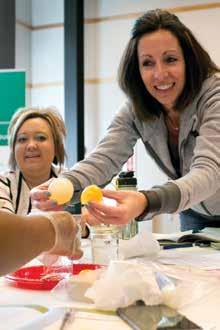

After listening to farmer board members on the types of programming they feel is important, OSC develops content to inform Ohio soybean farmers about relevant issues and the work we do with checkoff dollars. OSC’s primary goal is to improve soybean profitability by targeting research and development, education and promotion projects.
Our partnership with Brownfield Ag to produce 4-minute audio segments — the Voice of Soy Radio Show — keeps you in the loop with timely updates on how your checkoff money is advancing the Ohio soybean industry.
The importance of biofuels as a checkoff investment.
Growing the demand for soybeans through new uses.
The value of investing in research and new markets to secure long-term demand growth for soybeans.
Cab Conversations — brief, from-the-field updates throughout the growing season.

A free, professional development event for all students in the College of Food, Agriculture and Environmental Sciences at OSU helps participants obtain internships or jobs in agriculture. Sponsored by OSC and Ohio’s Soybean Farmers, with cooperation from Ohio Ag Net and Ohio’s Country Journal, the 2023 event theme was “Prepare Tomorrow’s Leaders Today”.
Students had the opportunity to connect with industry leaders and talk about what to expect when launching their careers. Members of the college’s career development office also provided resume help and support. Breakout sessions offered advice for undergraduates and graduating seniors, including how to prepare a higher-level resume, and mock interviews.
Most farmers’ markets include produce, meats and dairy products, rather than field corn and soybeans. But as consumers move away from rural areas, it’s important to make sure they understand where their food comes from.
Through a collaboration with Common Greens, a nonprofit that connects Ohio communities with regional farmers and food producers through farmers markets in Clintonville, Bexley and Upper Arlington, OSC staff began attending three markets a month to talk to urban consumers about soy protein, its link to meat consumption, what soy plants look like and how those plants are produced.
They also dispelled myths about farming, and increased understanding about production-scale farming and why it’s important to our — and the world’s — food supply.
This program, which includes a monthly podcast and newsletter produced in conjunction with Ohio’s Country Journal, builds on Extension efforts. The goal of the program is to get agronomic soybean information into the hands of farmers.
Hosted by Dusty Sonnenberg, CCA, the podcast highlights soybean research being conducted in the public and private sectors, and brings in-field information to farmers in an easy-todigest format. The series also includes videos on new/interesting practices and highlights unique farms.
The Dayton Dragons are a High-A affiliate of the Cincinnati Reds baseball organization. OSC created ads that ran during Dragons games to help people in an urban setting in western Ohio, learn about soybeans and to highlight local farmers. OSC also sponsored Soybean Night and one lucky farmer threw out the first pitch.
OSC created athletic sponsorships with OSU, the University of Cincinnati and Ohio High School Athletic Association to promote and convey consumer messages that soy is an important part of a healthy diet.
In partnership with the Ohio Soybean Association, OSC hosted a series of meetings with researchers and industry partners in Williams, Harding, Preble and Fayette counties so farmers could learn more about checkoff-funded activities.
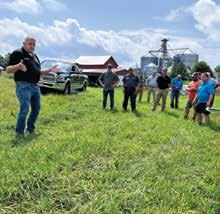
Dr. Scott Shearer talked about autonomous tractors and how this technology is in the pipeline. OSU Professor, Dr. Horacio Lopez-Nicora, addressed symptoms of sudden death syndrome (SDS) in soybeans and soybean cyst nematode (SCN), how to test for and verify that you have either issue, and how to best address these problems moving forward.
Tom Verry from Clean Fuels Alliance America talked about market opportunities for biodiesel, renewable diesel and sustainable aviation fuel (SAF). He shared the opportunities the expansion of each of these fuels represents for soybean farmers.
He touched on some of the checkofffunded work OSC does with Clean Fuels Alliance America to grow and promote the soybean industry.
Actively Advocating for Your Future. The Ohio Soybean Association (OSA) is focused on how policy issues and legislation specifically impact soybean growers. Through cooperation and partnership, OSA works to amplify the voice of agriculture and ensure that the next generation of farmers are heard.
OSA advocates for issues that will have economic and environmental impact on local, national and global soybean production.
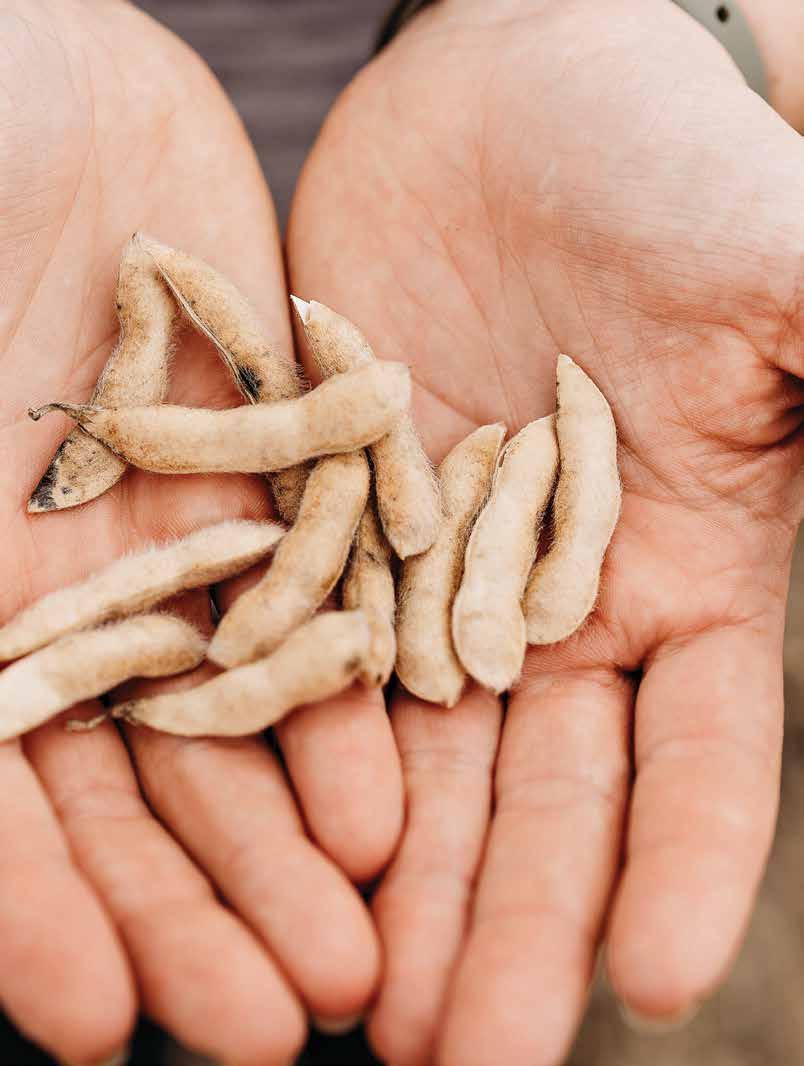


Farmers have used H2Ohio to enroll nearly 1.5 million acres in data-proven land management practices.
OSA helped secure H2Ohio program funding to invest in farmer practices that promote improvements in water quality, rather than one-size-fits-all regulatory approaches. This funding is primarily for farmers in the Western Lake Erie Basin, but up to 500,000 acres outside that region are also eligible for funding.
To date, farmers have used H2Ohio to enroll nearly 1.5 million acres in data-proven land management practices by working with experts from Soil and Water Conservation Districts or their crop advisor.
Recent changes will eliminate tax liability for 90% of Ohio businesses.
OSA successfully advocated for reform of the Ohio Commercial Activity Tax. Recent changes will eliminate tax liability for 90% of Ohio businesses — which includes farms. As a result, the first $3 million of gross receipts in tax year 2024, and the first $6 million in gross receipts in 2025 are exempt from tax liability. Farms will pay no taxes on their first $3 million of gross receipts in tax year 2024 and will pay no taxes on the first $6 million of gross receipts in tax year 2025.
OSA worked to promote passage of a five-year Farm Bill that provides critical tools to farmers including crop insurance, commodity price loss coverage and revenue protection. The legislation also supports market development programs such as the Foreign Market Development Program (FMD), which helps create, expand and maintain long-term export markets for U.S. agricultural products, and the Market Access Program (MAP). Through MAP, the USDA Foreign Agricultural Service (FAS) partners with U.S. agricultural trade associations, cooperatives, state regional trade groups and small businesses to share the costs of overseas marketing activities that help build commercial export markets for U.S. regional agricultural products and commodities. An extension to the 2018 Farm Bill was passed in November.
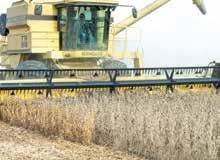
OSA fought against EPA restrictions to crop protection. The proposed new regulations would significantly hamper the ability of farmers to apply herbicides and insecticides to control invasive weeds and pests that can devastate yield, negatively impact soil health, and keep crop nutrients from leaving farm fields.
OSC advocated for an additional $1.5 million in funding for OSU Extension Services to broaden its direct on-farm support to Ohio farmers. The approved increase allows OSU Extension Services to expand data-driven educational and technical support — critical to maintaining up-time in the field today, while also preparing farms for the future with hands-on training.
More than $10 million was awarded to The Ohio State University College of Food, Agriculture and Environmental Sciences.
More than $10 million was awarded to The Ohio State University College of Food, Agriculture and Environmental Sciences to improve learning laboratories that advance agricultural best practices.
OSA’s new initiative engages farmers who volunteered to be “first responders” in active advocacy with their elected officials. As part of the Farmer Action Network, these farmers will be the first to receive notices for calls to action, in-district political events, and Ohio Soybean-hosted advocacy events designed to enhance farmer engagement on issues important to soybean farmers.
Established by OSC in 2007, the OSC Foundation is a 501c(3) non-profit organization dedicated to the improvement of the soybean industry through the support of scientific research and education. Since 2008, the OSC Foundation has awarded over $550,000 in scholarships to students pursuing agriculture or a related field of study at Ohio universities and colleges.
I was beyond impressed by the caliber of the students we met and their passion for agriculture. These students make me excited for the future of the soybean industry.”
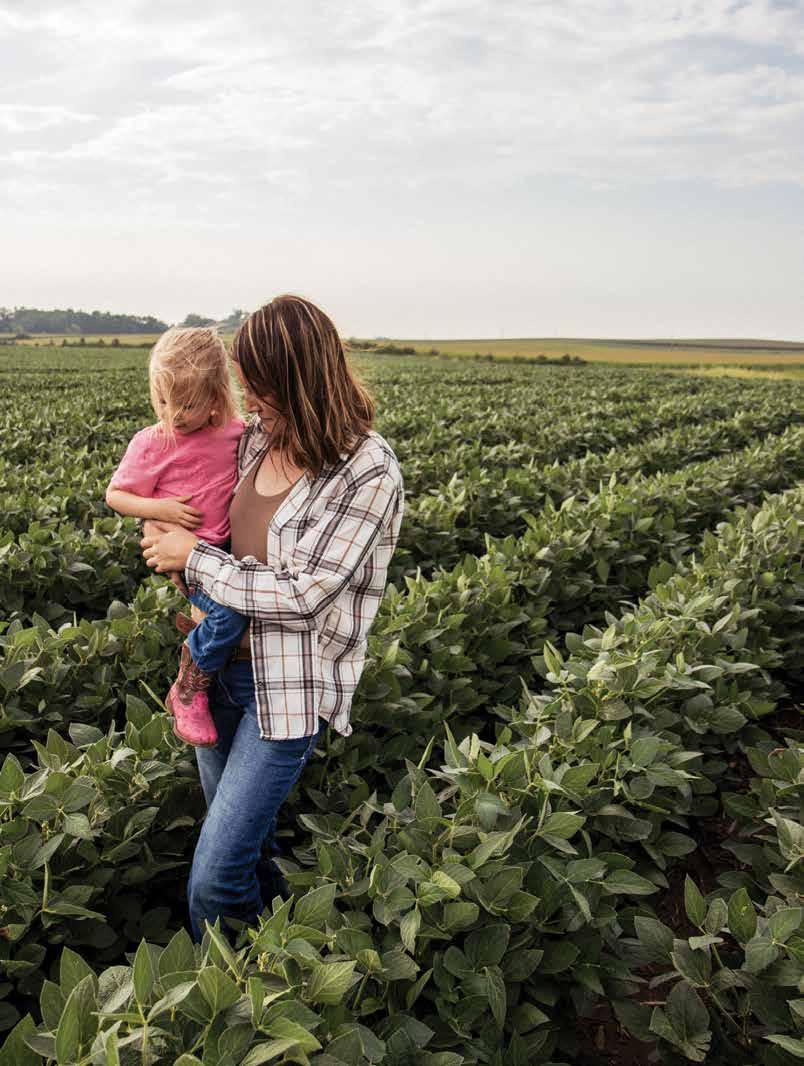

Total Scholarships Awarded in 2023

Undergraduate Scholarships
$ 65,000
$ 3,000 EA.
Justin Beckner
Haven Hileman
Kiley Holbrook
Alicia Knapke
Lauren Mellott
Paige Teeters
Amber Zimpfer
Graduate Scholarships
$ 5,000 EA.
Sayan Basak
Annika Pratt
Richard Cocks Scholarships
$ 10,000 EA.
Grant Heuing
Lauren Thornhill
Robinson W. Joslin Scholarship
$ 3,000
Ryanna Tietje
Graduate Scholarships
$ 2,500 EA.
Fabiano Colet
Alison Peart
OSA Scholarships
$ 1,500
Lauren Mellott ($1,000)
Haven Hileman ($5,00)
Bhima Vijayendran Scholarship
$ 5,000
Rachel Barrett
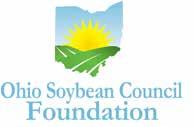
OSC proudly supports the best and brightest science students in Ohio through the Ohio Bio Science Awards presented during District and State Science Days. At the 2023 District Science Days, 57 projects were judged, and 26 individuals and one team received awards. At State Science Days, 28 entries were initially screened and 21 were forwarded on for virtual judging. 2023 State Science Day Award winner titles included The Effect of Lactic Acid Bacteria on the Growth of Soybean Plants; The Effects of Adding Amino Acid, L-Glycine, to Soybean Plant Growth and Development; and Testing Soil Erosion. Battelle Foundation, an independent research organization, also provided $55,000 in prizes to 16 school districts to operate an agriculture entrepreneurial program that introduces students to the ag industry.
Jointly funded by OSC, the OSC Foundation and Corteva Pioneer, Ag Biotech Academy has trained 350-400 teachers over the past 12 years, helping make the connection between ag biotech and the classroom in seven study areas. The Academy also provides teachers with the supplies needed to teach this material, and 100% of teachers say they will use the materials for 5-7 years. This program reaches approximately 30,000 students a year.
OSC continues its support of GrowNextGen, our K-12 education program that helps students build interest in ag careers and connects kids to science. The initiative gets students excited about agriculture and provides teachers with training, supplies and general ag curriculum, with an emphasis on soy.
Ag Biotech Graduate Academy 2023 was a workshop designed to help Ohio high school science teachers increase their knowledge about biotech and its uses in agriculture.
The Ohio Soybean Council (OSC) was founded in 1991 to manage the Soybean Promotion and Research Program, more commonly known as the soybean checkoff. OSC is governed by a volunteer farmer board, which directs the investments of the checkoff. The program’s primary goal is to improve soybean profitability by targeting research and development, education and promotion projects.